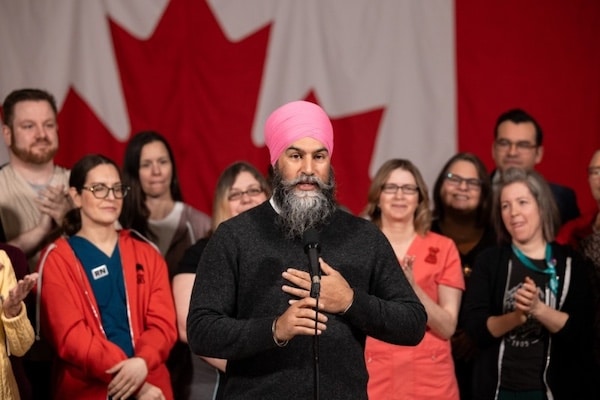The federal election result was a disaster for the NDP, but it was also a catastrophe for the entire labour movement. There is something terribly wrong with the messaging that unions are delivering to their membership. Surely, on this day, the alarm bells must be going off in the Canadian Labour Congress and in every other labour federation across the country.
How can it be that Conservatives won every seat in the Hamilton-Windsor corridor—the industrial heartland of the nation?
Clearly, it is either a case of union members not listening to their union leadership at all levels of the movement, or that unions have lost the ability to communicate effectively with their own membership.
The NDP, for their part, mistakenly believed that speaking to a handful of union leaders was going to yield electoral success. The Conservatives have eaten the NDP’s lunch by speaking the language of workers and meeting them in their places of work. This shift in Conservative policy began under Erin O’Toole, continued under Doug Ford, and was expanded upon by Pierre Poilievre. The labour movement and the NDP did little or nothing to counteract this shift in Conservative policy.
Midway through the election campaign, the Conservatives posted a Policy Declaration that clearly spelled out their intent to kill the Rand formula and introduce right to work laws in Canada. Astonishingly, the CLC was basically silent about this existential threat to the movement. This was a golden opportunity for organized labour to engage directly in the election but they failed to meet the moment. The only possible way for Conservatives to sweep the Hamilton-Windsor corridor was to have steelworkers, autoworkers, teachers, construction workers and public sector workers voting in sufficient numbers for Conservative candidates. Keep in mind, this happened when jobs in auto and steel industries were threatened by Donald Trump’s tariffs, and at a time when Poilievre was hinting at massive cuts to public services and jobs.
In 2014, when Conservative leader Tim Hudak was making similar threats in Ontario, the Ontario Federation of Labour mobilized union members across the province and played a major role in defeating him.
The 54 unions who make up the CLC have got to take a serious look at themselves and ask the tough questions as to how a right-wing political party ends up having more influence over their membership than they do? Right now, it is looking like the labour movement is little more than a dues collection agency with zero political ideology. It behooves the organization to get its act together. It cannot continue to function with its membership split four ways between the NDP, Liberals, Conservatives and the Bloc Québécois. The voice of 3.4 million union members and their families was shamefully missing from this election.
As for the NDP, the message is clear: you either go back to your CCF roots and the raison d’être for having a political party that purports to represent the interests of workers and their families, or you fold your tent and join the Liberals.
Moreover, the centrist bureaucrats who have yielded power within the party for the past two decades have got to be purged and the party rebuilt from the ground up.
In the 1960s, the CCF and the CLC forged a bond and came together to form a new political party—the NDP. Both organizations need to rediscover that fighting spirit to become a political force once again. Otherwise, they will wither and fade into irrelevance and oblivion.
Sid Ryan is the former president of the Ontario Federation of Labour.

